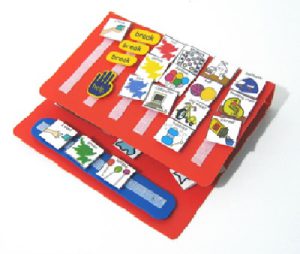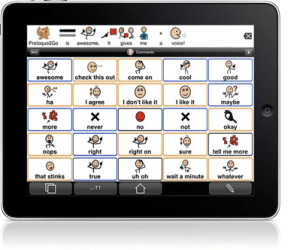AACs: PECS versus Proloquo2GO

When we meet new families at the Lizard Centre, one of the most common concerns they share with us is early childhood developmental delay in communication skills. Often this means that a lot of our learners do not have vocal communication when they start their journey with us.
Communication plays an important role in the development of our learners, as without it, they may not be able to communicate their wants and needs, play with their peers, or participate within their community. A lack of ability to communicate is also a large contributor to behaviour of concern.
When your child starts at the Lizard Centre with these difficulties, an Augmentative and Alternative Communication (ACC) system may be suggested by your Behaviour Support Specialist. An ACC as suggested by the name, is an alternative form of communication which may be taught to increase functional skills, vocal communication, and reduced behaviours of concern. The most common AACs currently utilised at the Lizard Centre are Picture Exchange Communication System (PECS) and Proloquo20Go.
Picture Exchange Communication System
PECS is a system in which a learner will exchange a picture card of the item/ activity/ person etc., that they want access to, to a communicative partner (family, friends, teachers etc.). A PECS book is usually comprised of multiple laminated pages, on which are numerous picture cards of the learners’ favourite things, places, people and more. There are multiple steps involved in teaching PECS, beginning at a single picture, teaching the learner to discriminate between all of the pictures, to having the child create sentences using their PECS book to request and hold conversations.
Pros:
– Research suggests that the use of PECS has been demonstrated to also increase vocal communication in learners. This has also been seen at the Lizard Centre!
– PECS requires no prerequisite to learn how to use it.
– PECS provides the learner with a clear communication system which can be interpreted by anyone who the learner communicates with.
Cons:
– When learners have many pictures, they use to communicate, the book can become heavy for younger learners to carry.
– Pictures need to be taken, or found online, printed, and laminated before use. This can be time consuming.
Proloquo2Go
Proloquo2Go is an app which can be bought and downloaded to devices, most commonly iPads/tablets. To use Proloquo2Go, a learner can tap onto an icon on the screen, after which the app will vocalise, the request using the device speaker. Learners using Proloquo2Go can have multiple pages for different categories (food, emotions, places etc.), which the learner can click on to find more specific icons.
Pros:
– Proloquo2Go is completely customisable. You can select the type of icons you would like, the font, upload pictures of the items rather than cartoon etc.
– You can also choose from a variety of voices for your device. This allows the learner to choose a speaker who they identify with most.
– You get to choose the type of device you would like to use. This makes it easy to transport with the learner.
Cons:
– As Proloquo2Go uses a device, it will need charging. This means that when the device is on charge the learner does not have a voice. This can be easily avoided by charging at night-time!
– A prerequisite to using Proloquo2Go is that the learner must have discrimination skills.
These are two great AAC options but are not the only ones!
If you think your child might benefit from an AAC, talk to your Behaviour Support Specialist today to explore the options!
Published On : June 20, 2022
Read more
Published On : July 4, 2022
If you suspect your child has autism spectrum disorder (ASD), your journey to understanding your child’s health challenges may include an autism spectrum test.
Published On : July 5, 2022
If you suspect your child has autism spectrum disorder (ASD), your journey to understanding your child’s health challenges may include an autism spectrum test.




